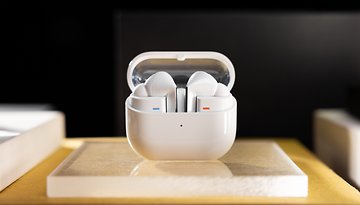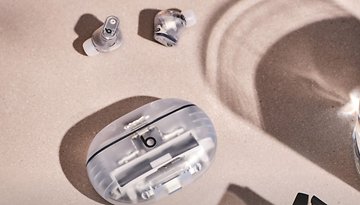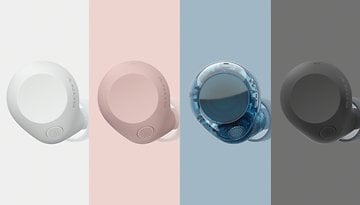The Microsoft Surface Headphones are my new favorite cans
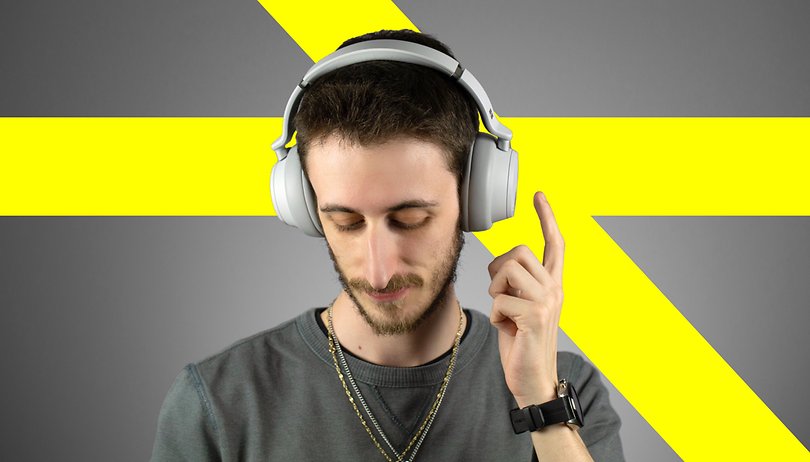

I waited for them for a very long time but finally, the Microsoft Surface Headphones arrived in my hands. In a very short time, these over-ear headphones have managed to build a great reputation, but will they manage not to disappoint my high expectations? Find out in the full review!
Good
- Comfortable and beautifully designed
- Intuitive controls
- ANC
- USB Type-C
- 3.5mm jack
Bad
- Lack of dedicated app (outside the USA)
- Windows 10 required for setup
- No AptX, AAC or LDAC
- Text-to-speech is poor
- Case is quite bulky
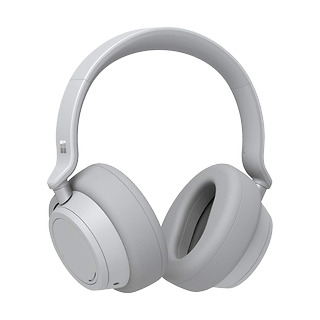
Affordable for many, but by no means cheap
The Surface Headphones are already widely available. Although they arrived late in some markets compared to others, they still represent a good buy among mid-range wireless over-ear headphones
The price of almost $300 does not make them accessible to all budgets, however, as they can be found on Amazon on sale from time to time and can be a great option for those looking for a pair of over-ear headphones that are comfortable and really smart when paired with your phone and beyond!
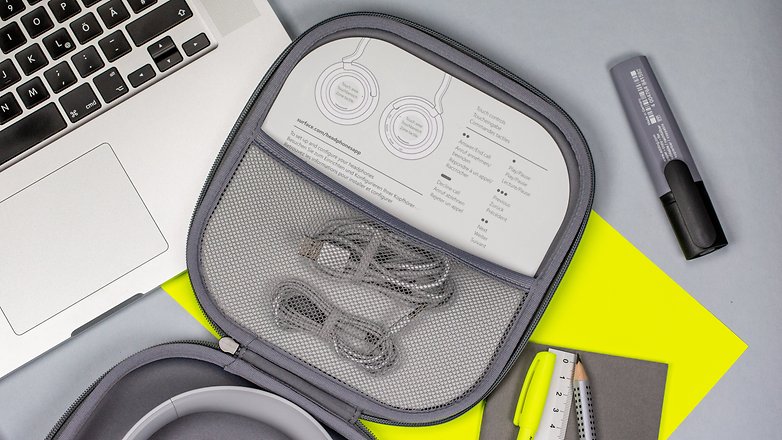
The sales package contains a travel case with the headphones, a 3.5mm (1.2m) audio jack cable and a type-A USB / Type-C USB cable (1.5m) for charging and connecting to your PC.
The best over ear design ever?
The Surface Headphones impress with their simple and elegant design . They are made entirely of polycarbonate, this material helps to keep the headphones lightweight (0.3kg), but they don't feel cheaper. The light grey color is modern and classy but I think it will get a lot of dirt (especially under the headband) in a short time. Thanks to the joints, it is possible to rotate the earpieces 90-degrees outwards and tilt them a few degrees around the horizontal axis to adapt them to the position of your ears.
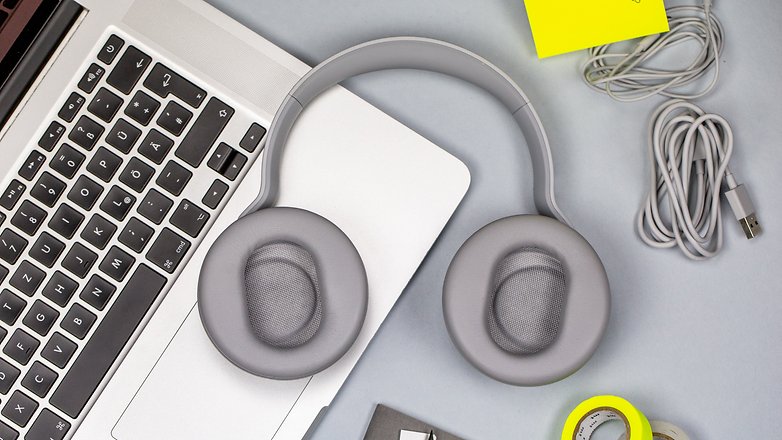
The inside of the earcups, which also contains sensors that can recognize if you are wearing headphones or not, is eco-leather while the part of the headband which comes into contact with your head is made of a soft and comfortable rubber. It is virtually impossible to hear the Surface Headphones move while you wear them. The rotation of the earcups allows you to place the headphones around your neck comfortably avoiding accidental touching of the touch-sensitive area outside of each of them.
It's a shame that the headband, on which the Microsoft logo sits, is not foldable. This makes the protective case provided for transport practically compulsory, but the case is really bulky and uncomfortable to carry with you, even if it is made of resistant and quality materials.
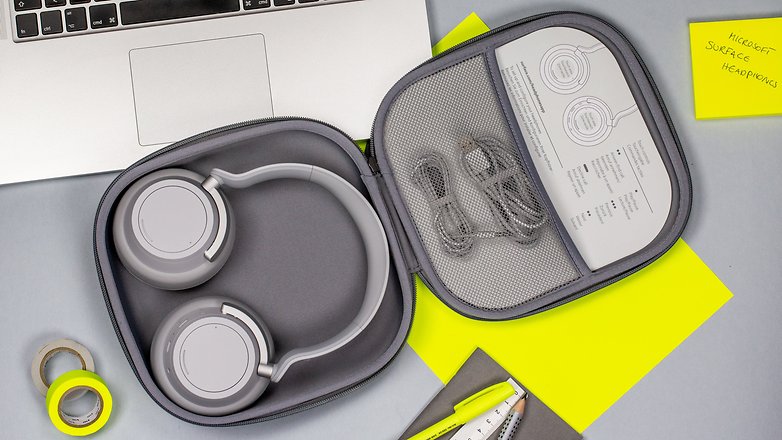
On the right earpice, we find the power and Bluetooth pairing buttons, a button dedicated to Cortana (but that calls up Google Assistant if you don't use the Microsoft app on Android or Siri on iOS), the USB-C port for charging and a 3.5mm headphone jack.
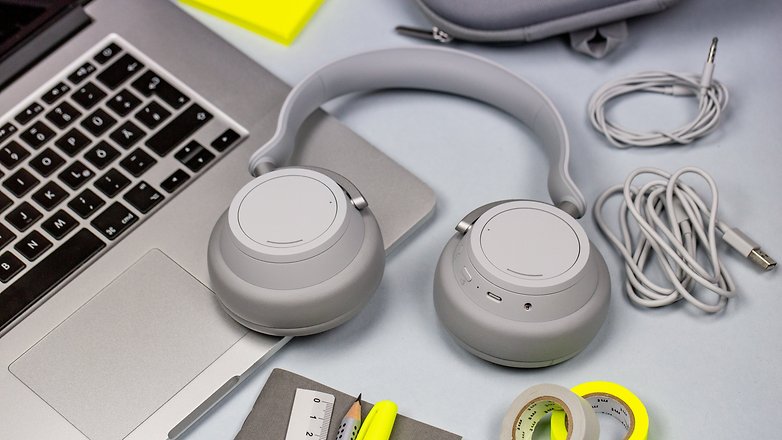
Both earcups feature a rotating bezel, which is the hallmark of these over-ear headphones. Instead of pointing everything at uncomfortable touch controls, which here we use only for Play, Pause and to skip tracks, Microsoft has implemented in these rings controls for the level of the active noise-canceling (left) and volume (right). Personally, I am in love with this solution even if sometimes it is difficult to find a point where the ANC is disabled but the ambient sounds are not amplified.
Headset management is more complicated than expected
One of the criticisms I have to make of Microsoft's headphones is that they are difficult to manage. To configure the Surface Headphones, it is necessary to go through the Cortana application, which is not available outside the United States, or through a Windows 10 PC.
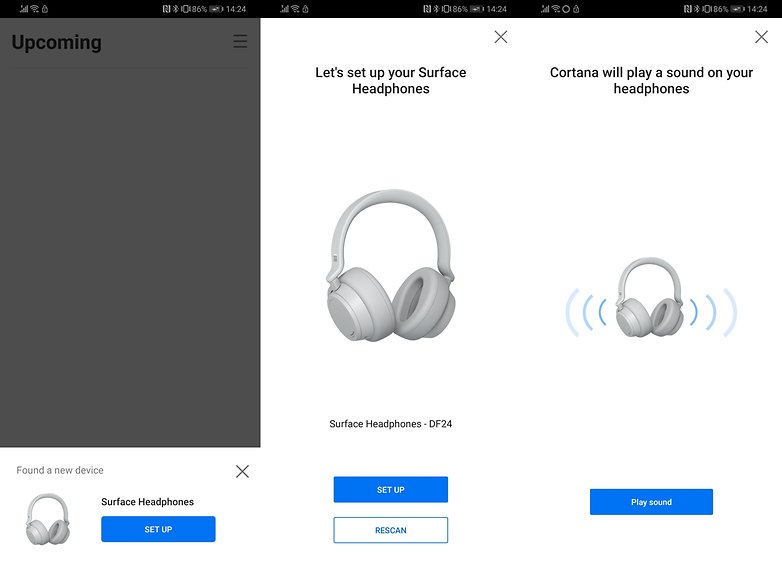
Of course, guess who's not in the US and writes from a Chromebook or Hackintosh (Mac OS)? Luckily I have access to a Windows PC in the office where I could perform the initial setup, change the language and update the headphones.
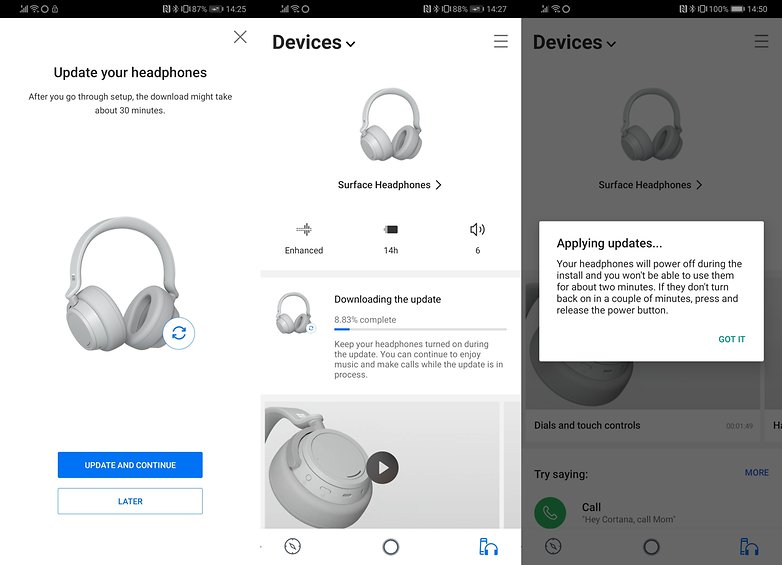
I understand that Microsoft wants to force us to use Cortana in order to promote its spread, however, since the assistant is not available for smartphones in Italy, it would have been useful to create an app dedicated exclusively to the management of Surface-branded headphones. Luckily you can install the APK of the application that works properly even outside of American soil...
By installing the application you can synchronize Cortana with your Gmail account to receive additional information and access contacts and your calendar from your headset. It's a shame that this app continues to show a persistent notification when the headset is connected to the smartphone. However, you can use the headphones without any problems once configured by PC and you have the advantage of being able to call up Google Assistant by pressing the button normally dedicated to Cortana on the headset.

I found it very pleasant that the headphones speak. Let me explain: when you turn on the headphones, they will welcome you in the selected language and inform you about the duration in hours remaining in the battery. Even when you turn them off you will be greeted by what should be an on-device version of Cortana.
When you connect or disconnect with your smartphone or headset PC you will hear the recorded message "The device is connected to:" followed by the Bluetooth name of the audio source. Unfortunately, in the latter part the text-to-speech engine does such a bad job that it is often difficult to understand what you just connected to. It's not a problem with the headphones, however, it's just annoying to hear.
To get better sound than this, you have to spend more, much more
As far as audio is concerned, the Surface Headphones are really good at holding their own in this market. At low volumes, the world is still kept away with ease thanks to the ANC and at high volumes, you really appreciate the 115dB capability, both via Bluetooth and with the wire. The bass is nice and doesn't mix with the midrange, which remains clear and distinct . They don't reach the sound quality of the Sony 1000X M3 but are in line, as far as I could tell, with the Bose QC 35 II and surpass the Beats Studio3 Wireless thanks to the presence of better adjustable noise cancellation.
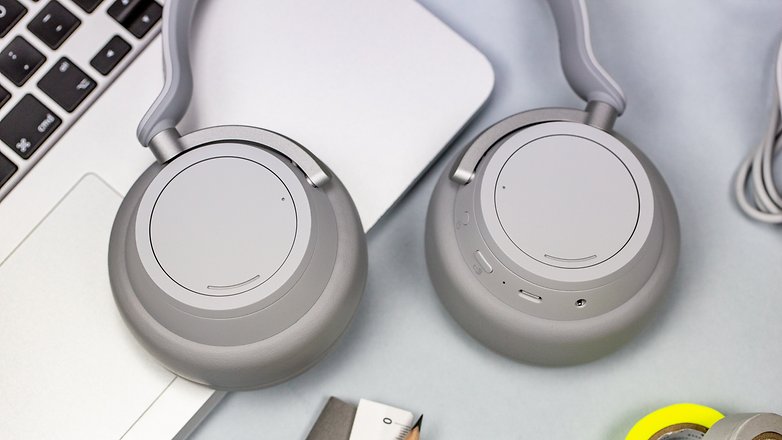
Unfortunately, Microsoft has used a 4.2 Bluetooth chip for these headsets, which has a smaller capacity and range than version 5. However, you can connect multiple devices to the headset at the same time and the headset will move imperceptibly between sources without difficulty and in a smart way. For example, I keep them connected to my Pixelbook for music but I can safely answer a phone call on my Google Pixel 3 XL without disconnecting them from the Chromebook.
Unfortunately, there is no support for high-quality audio codecs such as AptX, AptX HD or LDAC, if you are looking for headphones that can play audio sources with minimal loss of quality it is perhaps better to look elsewhere. The common consumer will not notice the difference, however.
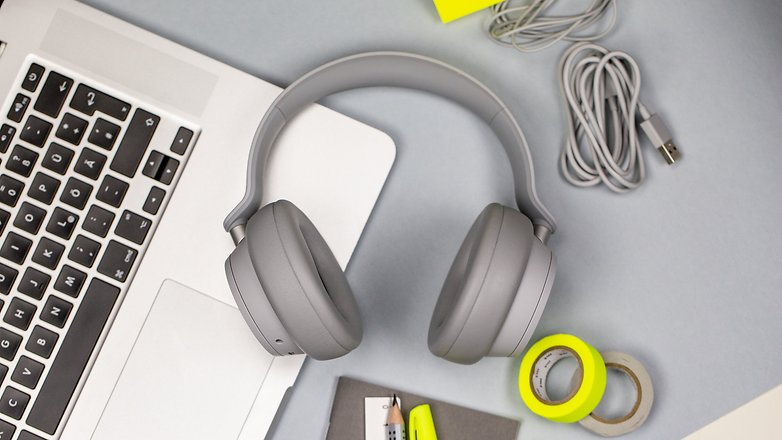
Noise cancellation works very well even if it is sometimes exhausting if it is kept active for a long time. Too bad, as explained above, it is not possible to simply deactivate the function. Turning the dedicated dial switches from minimum noise cancellation to amplification of ambient sounds without a point where both functions are off.
The Surface Headphones have eight microphones (2 for voice commands and 2 for ambient noise on each cup) and the noise cancellation works well. Wearing them, however, I noticed that when pressing slightly on the two earpieces to make them sit closer to my head, the cancellation improves even further. It's a shame the headband can not tighten enough to have the same effect.
Technical specifications
| Microsoft Surface Headphones | |
|---|---|
| Dimensions | 204x195x48mm |
| Weight (kg) | 0.3kg |
| Color | Light Grey |
| Speaker | 40mm Free Edge driver |
| Frequency response | 20Hz - 20kHz |
| Noise Cancellation | Up to 30dB - ANC Up to 40dB - passive cancellation |
| Output sound pressure level | Up to 115 dB (1kHz, 1Vrms cable and on) Up to 115 dB (1kHz, 0dBFS via Bluetooth) |
| Battery life | Up to 15 hours (Bluetooth, ANC on and Cortana hands-free enabled) Recharge in less than 2 hours |
| Input | USB Type-C 3.5mm Audio Jack |
| Cables included in the package | USB Type-A / USB Type-C 1.5m Audio cable 3.5mm jack 1.2m |
Decent battery life that won't blow you away
The battery life declared by Microsoft is a maximum of 15 hours, all while listening to music via Bluetooth, ANC on and Cortana hands-free enabled. I must admit that in my case, without using Cortana at all, I have always crossed that threshold with ease.
Using noise cancellation sparingly you can reach 20 hours of autonomy away from the charger, placing these Surface Headphones in line with their direct competitors, the Bose QC35 II but far from the 30 hours declared by Sony for its 1000X M3. Charging via the Type-C USB port takes approximately two hours.
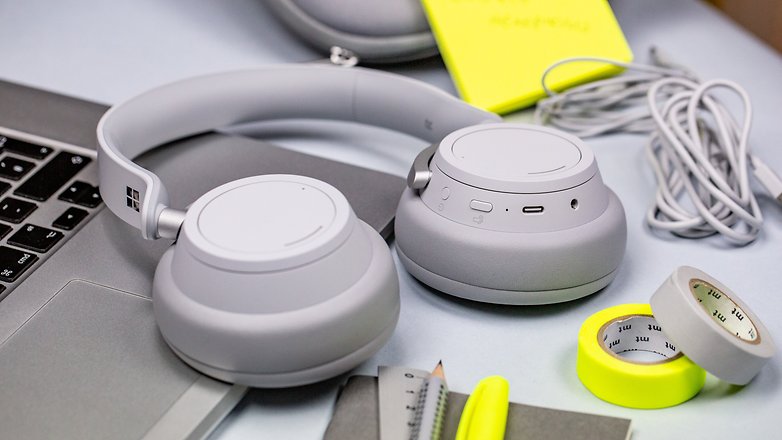
My new favorite over-ear headphones
The Surface Headphones are not the best over-ear headphones on the market. If you are an audiophile and are looking for something to connect to your DAC to enjoy high-quality audio you will need to continue your search. The lack of support for high-quality Bluetooth codecs could be a reason to avoid buying them.
However, if like me you like to listen to music often but you don't have high demands in terms of quality, these overears could be the ideal purchase. Microsoft has become one of the most exciting hardware manufacturers of recent years and the Surface product line does not disappoint.
With the Surface Headphones, the Redmond giant offers headphones of sufficiently high quality for the market segment in which they are positioned, an excellent ANC system (second only to Sony in this price range) and intuitive, unique controls. This is a product suitable for technology enthusiasts who like me have multiple devices to use simultaneously, travel a lot, often use voice assistants and want a quality product that simply works. And the Surface Headphones work really well!









